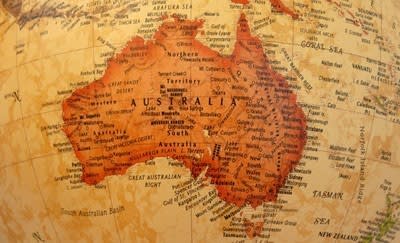What does the record 7% collapse in GDP mean? Bill Evans
EXPERT OBSERVER
The Australian economy contracted by 7% in the June quarter, broadly in line with expectations (both Westpac and market median at -6%).
This is by far the largest quarterly contraction in the Australian economy on record (previous record was -2.0% in June 1974).
However by international comparisons the contraction is relatively mild with UK (-20.3%); Europe (-12.1%); US (-9.1%); and Japan (-7.8%) all exceeding Australia’s contraction.
Of course these extraordinary numbers reflect the impact on activity from governments’ actions to contain the health damage to citizens from the Coronavirus.
As with other countries the primary impact of the containment policies was to restrict consumer spending. For Australia consumer spending represents 56% of GDP yet the 12% contraction in consumer spending explained 98% of the overall contraction in GDP. Components of consumption which were most adversely affected were: transport services (fell 86%); accommodation services (-77%); catering services (-56%); recreational and cultural services (-52%) and health (20%).
Household gross disposable income rose by 2.2%, largely reflecting the boost to social assistance benefits.
Hours worked fell by 9.8% although wage incomes declined by only 2.5%. That “gap” is explained by the JobKeeper subsidy payments which were used to maintain the wages of workers who experienced a significant reduction in hours worked.
With the lift in household incomes and the collapse in spending the household savings rate soared to 19.8% from 6% in the March quarter.
The sharper fall in hours worked relative to output points to the disproportionate job losses in the labour intensive service sectors of the economy.
The dominance of consumer spending in this result is generally highlighted by other components of expenditure, which were weak, reflecting the recession conditions, but not spectacularly so – business investment fell 3.5%, including a fall of 6.8% in machinery and equipment and a partly offsetting rise in infrastructure investment; residential construction fell by 6.8%; and real estate activities fell by 18.6%.
Nevertheless we can expect that the lags from recessionary conditions in the June quarter will continue to impact business investment and housing for the remainder of the year.
Exports fell by 6.7% (including a 24.6% fall in travel services and a 46.6% fall in transportation services) while imports fell 12.9% as the international border closure triggered a 98.7% fall in travel services and a 32.9% fall in transportation services. Overall net exports contributed 1.0ppt to GDP growth.
The growth outlook for the remainder of the year will be dependent on the success which government achieve in containing the virus.
On the positive side we assess that the economy had considerable momentum going into the September quarter following the 4% snap back in hours worked in June and the lift in jobs in June and July. Of course that momentum was severely impacted by the deterioration in Victoria which represents around 24% of national GDP.
Our current figuring points to a flat quarter overall in September to be followed by a strong recovery in the December quarter. That recovery is dependent upon our base assumptions that Victoria will move through to a Stage2 in the December quarter while other states will avoid any damaging second waves.
As we have seen in today’s report the governments’ support packages have played a key role in containing the impact on household incomes from the containment policies. The December quarter will – on current policy settings – see a considerable scale back in that support affecting both households and business.
However, as demonstrated by the spike in the savings rate, the household balance sheet is in much better shape to cope with the partial withdrawal of the government payments.
The upcoming Federal budget, on October 6, provides the government with another opportunity to reassess and reset policy support. The annual Budget will undoubtedly be expansionary, the question is the degree of additional stimulus and the form that takes. The bringing forward of already legislated income tax cuts is an appropriate action in the current environment.
Overall we expect that the net positive effect of the general reopening of the state economies on the consumer sector, including relaxation of key state border restrictions will underpin a strong recovery in the December quarter.
